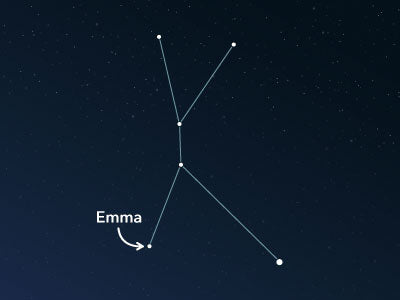The constellation Cancer
Caratteristiche
- Nome latino
- Cancer
- Emisfero
- Emisfero settentrionale
- Visibilità
- January - May
- Area
- 506 deg²
- Stella più luminosa
- Altarf (HIP number 40526)
- Specialità
- Open star clusters

Cancer, Latin for crab, is a constellation in the northern sky and is mainly known from astrology. It was already described in antiquity by the Roman-Greek astronomer Claudius Ptolemy. There are interesting deep-sky objects to observe in its area.
Hemisphere, visibility, and area
The constellation Cancer is located in the northern hemisphere and is visible from almost all inhabited regions of the earth. In the north, it can be seen from anywhere. South of the equator, it is visible up to the 57th parallel. This means that it can only not be observed from Antarctica, as well as the immediately adjacent oceans and islands.
The best time to watch it is during the winter and spring months in the northern part of the globe. Especially in March, it offers a beautiful view of the constellation.
In addition, Cancer lies on the ecliptic and is thus one of the 12 zodiac signs that are important in astrology. Every year, from around July 21 to August 10, the sun passes through Cancer. At this time, it rises and sets with the sun and is, therefore, not visible from earth.
According to the astrological zodiac, however, people born between July 22 and June 21 have the zodiac sign Cancer. The precession of the earth's movement means that the current actual orbit of the sun is shifted by about a month. Nevertheless, the zodiac signs are still determined based on the former rotation.
The constellation has a size of around 506 square degrees. That puts it in 31st place compared to all other 88 constellations.
Although Cancer is well-known today, it is still not easy to spot in the night sky. This is because it consists mostly of faint stars. The brightest star is Altarf (Latin: β Cancri, Beta Cancri), with an apparent magnitude of roughly 3.5. In the common visualization of the constellation in the form of an inverted or double Y letter, Altarf forms the southernmost point.
The neighboring constellations provide a good orientation to find Cancer in the night sky. Along the ecliptic, Gemini and Leo border it. These two constellations are also well-known as astrology signs. Other neighbors are the Lynx, the Canis Minor (known as Lesser Dog or Little Dog), as well as the Hydra, and the reclining Leo Minor (well-known as Little Lion).
Specialties in the constellation
There are exciting open star clusters in the area of Cancer. One of them can already be observed with the naked eye under good conditions.
It has the catalog number NGC 2632 or M44 (Messier 44). It is also known by the proper name Praesepe, Latin for a manger. The object has been known since ancient times. Around 130 BC the Greek astronomer Hipparchus was the first one who cataloged it. Later, also other astronomers, such as Giovanni Batista Hodierna, John Flamsteed or the well-known astronomer Charles Messier rediscovered it. From the latter, the object has its catalog number M44.
The star cluster contains over 300 stars and is located about 500 light-years away. M44 can be easily seen west of the connecting line between the stars Asellus Australis (Latin: δ Cancri, Delta Cancri) and Asellus Borealis (Latin: γ Cancri, Gamma Cancri). In dark nights, it can be observed without equipment, and even just through binoculars, it offers a wonderful view.
Mythology and history
In ancient Egypt, around 3,000 BC, the Cancer constellation was initially introduced with the name Ab-Schetui and represented a turtle. Later in the New Kingdom, it was supplemented with the scarab beetle, a symbol of immortality and the related death and rebirth of the Nile.
In ancient Greece, Cancer was finally interpreted as a crab, and Ptolemy introduced it with the name still in use today.
In Greek mythology, the crab played a minor role and has different origins. In one legend, it is associated with an exploit of Hercules.
During a battle between the Hydra and Hercules, the goddess Hera sent a crab to kill her hated illegitimate stepson Hercules. The crab failed miserably, but as a reward for the attempt, Hera placed the crab in the sky. However, since it could not fulfill its task, it does not shine as brightly as the other constellations today.
PubblicatoLeggi altri articoli interessanti

An overview of all 88 constellations
Learn more about all 88 constellations and read interesting information about the mythology, visibility, and features.

App Planetario
Discover the night sky with our planetarium app!
Available for iOS and Android.

Dai un nome a una stella nella costellazione Crab
Name a star in a constellation and create something that lasts for eternity.